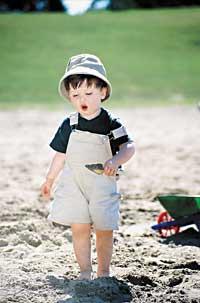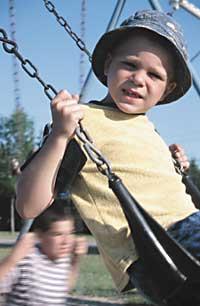Impaired behavior in children: What is AMD?

AGHA, a disorder that affects children's behavior, is characterized by their inability to stay still, focus, and pay attention to things, and react too quickly. At least 60% of cases have persisted in adulthood. Lack of attention, hyperactivity, and impulsivity are the three main symptoms of the syndrome, which usually appear before age seven. Therefore, diagnosis should be made before that age.
According to experts, the mother notes the unstable or nervous behavior of the fetus during pregnancy. The child with hyperactivity starts walking very quickly, with 9-10 months. And to end the general signs, maternal-child harmony is not total, since the child faces his mother from childhood
And although these three symptoms constitute a remarkable clinical picture, unfortunately, there are still children who have not been properly diagnosed or treated. In some cases, parents do not give these symptoms as much importance as for an alteration; on the other hand, behavioral disorders are somehow ‘tolerated’ in our society; and finally, although diagnosed, there are children who are not treated, although the consequences can be serious.
How to know if the child has AMD?
According to the DMSN guide of the American Psychiatric Association, the best tool for the diagnosis of mental illnesses and mental disorders today, to diagnose DDR it is necessary that two or more symptoms of neglect or hyperactivity or impulsivity appear. These symptoms should last at least six months, until adaptation or adjustment problems occur and are incompatible with the child's development.
On the other hand, the signs or symptoms of LDCT should appear before the age of seven and this lack of adaptation must be evident in two or more situations (at home, at school, etc. ). ). These symptoms should not appear mixed with other mental disorders.
Causes

Research has not yet identified the ultimate cause of LDCT, but all points to the fact that biological factors, especially the lack of dopamine and neurotransmitter noradrenaline, are of great importance in the genesis of the disease.
Dopamine is a natural chemical, according to experts, dopamine activates brain structures that are behind the ‘award’ or reinforcement of socially accepted behavior. Noradrenaline, on the other hand, acts more slowly in the brain and, as it is believed, controls the sense of alertness, the ability to selective attention and the sense of orientation. Therefore, it is easy to understand that in case of dopamine or norepinephrine failure the symptoms mentioned above appear.
In addition, experts consider that TDDR has a hereditary basis, but they are still in the early stages to know the sequences of genes involved in the alteration. However, factors related to the environment are also important, and many characteristics and dynamic factors within the family can cause or explain the symptoms of this disorder.
What is the most effective treatment?
The treatment should be adapted to each child, but studies show that combining drugs and psychological, educational and social intervention are the best results. To achieve maximum success, treatment must involve the child, his parents, other relatives and educators, always under the control of the doctor.
Pharmacological treatment should begin at 6 years, for 2-3 years. Currently, the methylphenidate that reorganizes the functioning of neurotransmitters is the most used. In addition to medicines, it is important to take into account the social exclusion that children may suffer and take action against them. Hyperactive children are often more aggressive, committed to destroying things, dominant, hard and rougher than their friends, which causes a certain rejection and rejection in the group. Of course, long-term behavior of the child worsens and decreases its performance. Be careful, therefore, with this social aspect, which is very important.
More significant symptoms
- Those related to lack of attention: the inability to pay attention to details or errors in school tasks by carelessness; the difficulty of paying attention to games; the lack of attention to the teacher's instructions and the inability to complete school or household tasks; the lack of desire to undertake jobs that require a continuous mental effort; the loss of objects necessary for the accomplishment of tasks or activities (toys, commissions, pencils, books or other instruments).
- Hyperactivity: continuous movements with your hands or feet; in situations where you have to sit (for example, at school), get up and leave the seat; run from one side to the other or get on things when it is not appropriate; inability to play quietly or difficult to undertake leisure activities; and often be “on the move” or behave as “by motor”.
- As for impulsivity: answer before the question ends, not be able to wait for the turn and therefore disturb or remove the word to friends, and talk too much.





